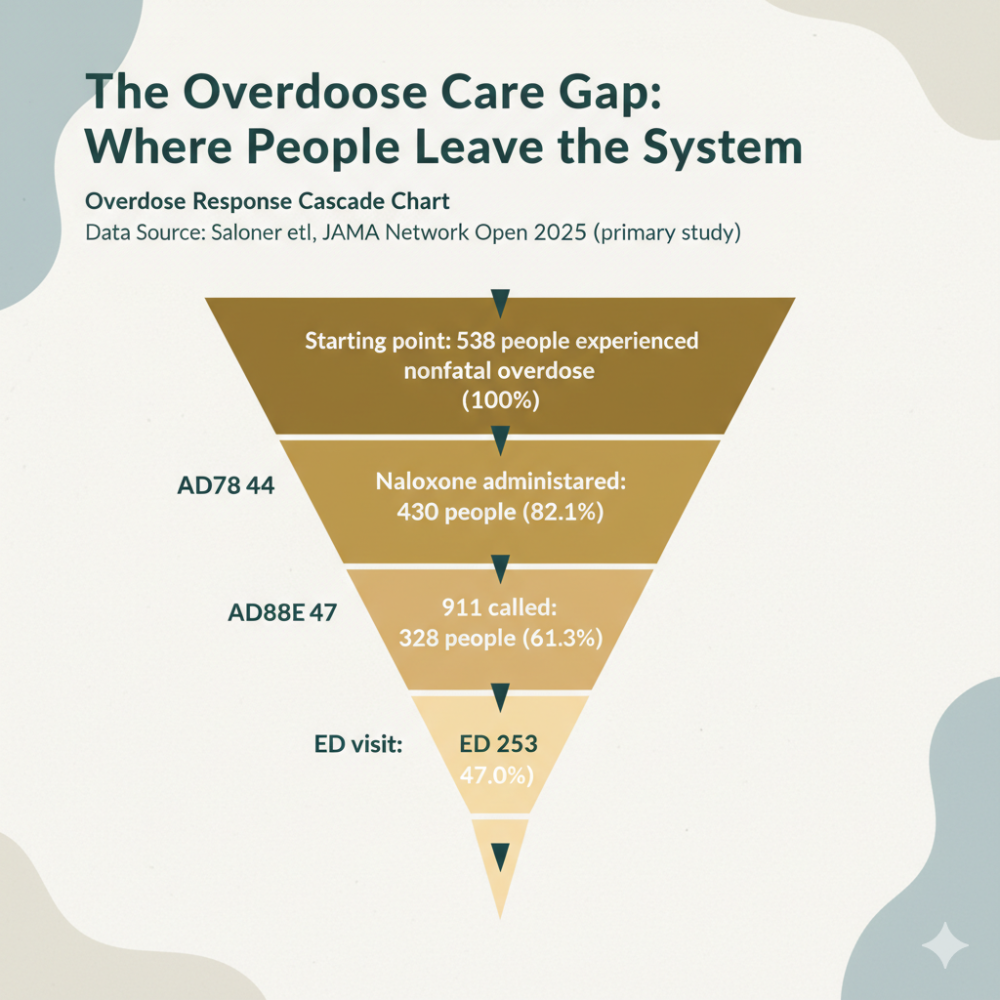Understanding Mass Overdose Events: Lessons from Recent Baltimore Incident
On July 10, 2025, Baltimore’s Penn-North neighborhood experienced a devastating mass overdose event that sent 25 people to local hospitals, with five individuals reported in critical condition. While the specific substance involved remains under investigation, this incident highlights critical issues surrounding contaminated drug supplies and the ongoing public health crisis affecting communities nationwide.
What Are Mass Overdose Events?
Mass overdose events occur when multiple people experience overdoses in the same location or timeframe, typically due to exposure to particularly potent or contaminated substances. These incidents have become increasingly common across the United States, often involving:
Fentanyl-contaminated drugs: Many substances in the illicit market now contain fentanyl, even when users believe they’re taking something else
Unknown synthetic compounds: New psychoactive substances with unpredictable effects
Concentrated or pure substances: Drugs with unexpectedly high potency levels
Contaminated supplies: Substances mixed with dangerous adulterants
The Hidden Dangers in Today’s Drug Supply
The Baltimore incident underscores a frightening reality: users often have no idea what they’re actually consuming. The modern illicit drug market presents unprecedented risks:
Fentanyl Contamination
Fentanyl, which is 50-100 times more potent than morphine, has infiltrated virtually every category of street drugs. Users seeking cocaine, methamphetamine, or counterfeit prescription pills may unknowingly consume fentanyl, leading to rapid and severe overdoses.
Unpredictable Potency
Street drugs lack quality control, meaning potency can vary dramatically even within the same batch. What might be a “typical” dose one day could prove fatal the next.
Unknown Substances
New synthetic drugs emerge regularly, often before their effects are fully understood. These substances can cause unexpected reactions and may not respond to standard overdose reversal medications.
Recognizing Overdose Symptoms
Understanding the signs of overdose can save lives.
Common symptoms include:
Respiratory depression: Slow, shallow, or absent breathing
Unconsciousness: Inability to wake the person despite loud noises or pain
Blue lips or fingernails: Indicating lack of oxygen
Gurgling sounds: Suggesting blocked airways
Weak pulse: Or no detectable pulse
Cold, clammy skin: Often pale or grayish in color
Immediate Response to Overdose
If you suspect someone is overdosing:
Call 911 immediately: Professional medical help is essential
Administer naloxone (if available): This medication can reverse opioid overdoses
Provide rescue breathing: If the person isn’t breathing adequately
Stay with the person: Monitor their condition until help arrives
Don’t assume they’re “just sleeping”: Overdoses can be fatal within minutes
The Role of Naloxone in Mass Casualty Events
Naloxone (Narcan) has become a critical tool in responding to overdose emergencies. In mass overdose situations like the Baltimore incident, first responders rely heavily on naloxone to save lives. However, several factors complicate its use:
Multiple doses may be needed: Fentanyl’s potency often requires repeated naloxone administration
Temporary effects: Naloxone wears off, potentially allowing overdose symptoms to return
Unknown substances: Some synthetic drugs may not respond to naloxone
Resource limitations: Mass events can strain available naloxone supplies
Community Impact and Response
Mass overdose events affect entire communities, not just those directly involved. They:
Strain emergency services: Overwhelming local hospitals and first responders
Traumatize neighborhoods: Creating fear and anxiety among residents
Prevention Through Treatment and Education
While we cannot eliminate all risks from illicit drug use, comprehensive approaches can significantly reduce harm:
Professional Treatment Options
Medical detoxification: Safe, supervised withdrawal management
Medication-assisted treatment: Evidence-based therapies for opioid use disorder
Behavioral therapy: Addressing underlying factors contributing to substance use
Integrated care: Treating co-occurring mental health conditions
Harm Reduction Strategies
Fentanyl test strips: Allowing users to test substances for contamination
Naloxone distribution: Making overdose reversal medication widely available
Drug checking services: Testing substances for dangerous adulterants
Community Education
Public awareness campaigns: Informing communities about overdose risks
Training programs: Teaching bystanders how to recognize and respond to overdoses
School-based prevention: Educating young people about substance use risks
Healthcare provider education: Ensuring medical professionals understand current drug trends
The Path to Recovery
For individuals struggling with substance use, professional help offers the best path forward. Modern addiction treatment recognizes that substance use disorders are medical conditions requiring comprehensive care, not moral failings.
Treatment approaches have evolved to address the specific challenges of today’s drug supply:
Rapid response protocols: Quickly addressing the medical complications of synthetic drug use
Extended monitoring: Recognizing that synthetic substances may require longer observation periods
Individualized care: Tailoring treatment to each person’s specific substance use patterns
Family support: Helping loved ones understand and cope with addiction
Hope in the Face of Crisis
While incidents like the Baltimore mass overdose are tragic reminders of the dangers facing our communities, they also highlight the importance of comprehensive addiction treatment and harm reduction services. Every person affected by substance use deserves access to evidence-based care that can help them achieve lasting recovery.
The key is acting quickly. Addiction is a progressive disease, but it’s also treatable. Professional intervention can interrupt the cycle of substance use before it leads to tragic outcomes like those witnessed in Baltimore.
Taking Action
If you or someone you know is struggling with substance use:
Seek professional help immediately: Don’t wait for a crisis
Consider medical detoxification: Safe withdrawal management in a supervised setting
Explore treatment options: Many effective programs are available
Connect with support services: Recovery is more successful with comprehensive support
Carry naloxone: Be prepared to respond to overdose emergencies
Remember: seeking help is a sign of strength, not weakness. Professional treatment saves lives and helps individuals build meaningful, substance-free futures.



